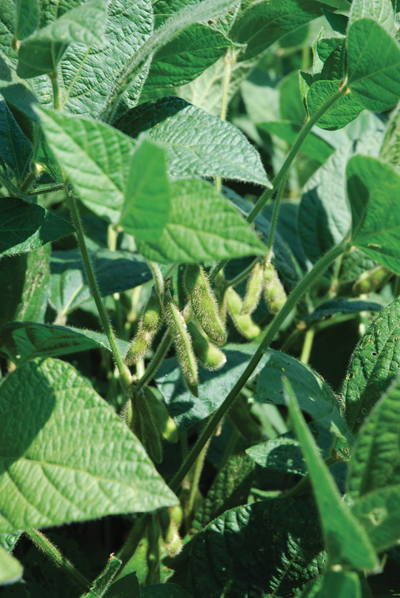
Features
Agronomy
Other Crops
How big a threat is Argentina?
Soybeans are a staple export for many countries. When it comes to exports of soybeans for oilseeds, Argentina ranks roughly third in the world after the United States and Brazil.
March 16, 2010 By Rosalie I. Tennison
 |
| Canada’s identity preserved (IP) soybean sector must continue to push for excellence to hold off any advances that may come from countries like Argentina.
Photo by Ralph Pearce.
|
Soybeans are a staple export for many countries. When it comes to exports of soybeans for oilseeds, Argentina ranks roughly third in the world after the United States and Brazil. However, in recent years, Argentina has been making moves to enter the food-grade soybean market, with a stepped-up presence at international marketing conferences. At the World Soybean Research Conference in Bejing, China, in August 2009, Argentine businesses were represented by multiple exhibitors; Canada had only one.
Still, does the South American country have what it takes to unseat Canada when it comes to meeting the needs of the finicky Japanese market?
For the new chair of Agri-Food Innovation and Regulation at the Richard Ivey School of Business in London, Ontario, Argentina’s reliance on genetically modified (GM) varieties will keep them out of the markets where GM soybeans are not welcome. “The Argentine soybeans are largely GM, so this concerns the Japanese,” says Dr. David Sparling. “Canada is segregating GM from non-GM soybeans that go to Japan. The Japanese buyers carefully check our production, but we spend time and effort tailoring our production to meet that market.”
So far, there is little indication that the Argentines are a threat to Canada in the food-grade market because their system of segregation and tracking is not as sophisticated as Canada’s, yet. “At this point, Argentina is not a major competitor in the food-grade market because they aren’t producing specialty beans,” comments Crosby Devitt, manager of Research and Innovation with the Grain Farmers of Ontario. “However, Canada’s challenge going forward is to continue our focus on meeting the needs of our buyers and keeping our breeding programs focused on specialty varieties.”
Canada has a solid reputation of meeting the needs of customers and anticipating what will be expected in the market. Both public and private breeding programs work diligently to keep ahead of trends so there are varieties ready to plant when buyers come calling. “Our breeders keep up with the latest nutrition information, and there is communication with customers on what their needs are,” Sparling explains. “It helps to have good partners to work with to help us know where the market is going.”
Growers knowing who their competitors are is a major aspect of market development, according to Devitt. Therefore, it would be wrong for Canada to rest on its laurels and not be aware of what is happening in Argentina. “Soybeans are a huge sector of the Argentinian agricultural economy,” he continues, “but it is built on large volumes for the crushing industry. Canada has to continue to work at keeping our customers happy, finding new ones and developing varieties with the quality traits they want.”
It is possible, adds Sparling, that Canada’s niche is its ability and commitment to giving high priority to what is wanted in the market and to determine how to meet those needs. “Without a doubt, Canada’s infrastructure is better in producing and tracking food-grade soybeans,” he continues. “We back up our position with good genetic material and we have top breeders who do a great job. Argentina may want to be more active as a player in the food-grade market and may have this as a long-term goal, but that economy is facing major challenges right now.”
That is not to say that Canada should not be concerned about Argentina pushing its way into this country’s markets, with Brazil not far behind. So far, Canada’s edge lies in its ability to meet the needs of its customers, particularly Japan, with high-quality, non-GM soybeans for specific uses. Sparling says that is what it means to be a global player in the marketplace; there will always be a producer trying to take another producer’s place, and that individual will always have to work at being better.
For now, it appears that Argentina is a distant cloud hovering on the edge of the global food-grade soybean marketplace. However, that cloud could get closer. When it does, Canada’s industry, from breeders to growers to marketers, will have to be prepared to develop better varieties, improve production practices and deliver a product that buyers continue to demand.